Part 1: The Pros and Cons of Marine Corps Training
The Marine Corps is the most feared and respected fighting force on the planet. The storied history of the Corps is a seemingly endless report of instances of honor, courage, and commitment — the core values of the Marine Corps. Having experienced this tradition firsthand, I can tell you this reputation was earned through a training system that is second to none. From bootcamp, to occupational schools, to continuing education, the Marine Corps knows how to assess a situation, form a plan, and execute it with extreme efficiency. As instructors and practitioners of physical culture, we stand to learn a lot from an organization that has seen it all and continues to produce excellence.
To list what the Marine Corps does well would be an endeavor I don’t have time for, so for both my sake and yours, I will limit this conversation to a few, broad physical training aspects of the Corps’ culture.
-
Keeping it simple. Without getting political, I will say the Marine Corps is not on the top of any “who needs new gear or facilities” lists sitting up in Washington. That was always ok with us. As a matter of fact, we took great pride in performing above and beyond expectations with less than desirable quality or quantity of supplies. This mindset also rang true in our physical training. Organized physical training (PT) sessions rarely included any equipment outside of a pull-up bar and even that was not a constant. Through a regimen that includes very basic exercises, the Marine Corps creates and maintains a fit and ready fighting force. Outside of PT, we did a lot of loaded carries. When it comes to keeping it simple in the exercise realm, it is hard to beat the loaded carry. See weight, pick weight up, carry weight for a set distance, put weight down. Congratulations! You are now stronger than when you first laid eyes on that weight.
-
As Dan John says, “Keeping the goal the goal.” If you want to be proficient with a movement or score well on a test, you must practice what is required of you often. At least three times a week, Marines gather on the platoon level and train. We run, do calisthenics, pull-ups, push-ups, and maybe even go through the standard USMC obstacle course (that was always a special treat). The intensity of training varies through distance of runs, volume of exercises, and duration of training. One thing is always constant though, we are training movements that will be tested through the PFT or standard combat training drills. There were no frills and no distractions from accomplishing what is expected of us and therefore few have a hard time maintaining at least the minimum standards.
-
Chaos. As I mentioned before, the Corps has a standard obstacle course that you will find duplicated on just about every camp around the globe. At first glance, it seems like there would be nothing to it for any physically competent individual. Throw in people yelling at you (not like when you get yelled at by your dad — this yelling comes from what seems to be the depths of hell and is guaranteed to rattle your train of thought), exhaustion from prior activity, and maybe even a loaded rucksack and some rain and you have yourself a training event that will test your ability to perform a task under stress. You know what Marines have to do a lot of the time? Perform tasks under stress. So the obstacle course is a fine-tuned instrument for dialing Marines into the idea that no matter what we encounter, we have a job to do and we are going to do it. Outside of that, Marines are also very, very good at handling things when they don’t go their way. Plans are great but they rarely survive first contact so be prepared to adapt your strategy and stay in the fight!
That is a short and general glimpse at what is done well in the physical culture created by the Marine Corps. And while perfect does not exist in this world, my beloved Corps has done a stand-up job of adapting to the demands of being a world class fighting force and overcoming the obstacles laid out by an often tumultuous world for 239 years.
As outstanding as the Marine Corps’ training regimen is, as with anything else, there is always room for improvement. My mindset on training has changed since my days of wearing PT belts as I have since dedicated my attention to studying better ways to train the human body. My idea that the best way around a wall was through it has been replaced with more subtle and insightful strategies, and because of that I am more resilient than I have ever been. Notice I kept that to “more resilient than I’ve ever been.” I’m not going to throw out the obligatory “I’m stronger than I’ve ever been” because me-at-21 would rip me-at-38’s arms out of socket. But I will say I now see how I could have been even stronger as a 21-year-old Marine.
Here are a few ways I would humbly suggest the Marine Corps adapt their training to address some gaps that were existent during my service. My thoughts are that if the following movements were tested there would be fewer injuries in training and an even more effective fighting force would be in place.
-
Sprinting. I was fortunate to never have been required to serve in combat. Having said that, I can’t imagine there are too many instances in combat where my pace in moving from one spot to the other would match that of a PT run. In our organized PT, we never did any sprints, which does not really reflect the demands put on our body in combat training. In assault drills, we were taught to time our advancements by saying, “I’m up. They see me. I’m down.” This meant we would start saying that as soon as we showed ourselves from behind cover and would be down in the prone position or behind cover by the time we recited “I”m down.” This was the optimal time spent exposed in order to increase your chances of not being recognized and “addressed” by the enemy. It is my understanding this is an issue that is starting to be addressed in Combat Fitness Testing.
-
Squatting/Hinging. Marines do an awful lot of picking things up and putting them down. Rucksacks, ammo cans, water containers, other Marines, you name it, we’ve picked it up off the ground and put it back down again. The body squat and hinge were relatively under-practiced in our regimented PT, and was never tested, yet a great portion of the work we did required us to constantly perform a squat or hinge of some sort.
-
Front Loaded Lifts. I would recommend front loaded lifting not only for the enormous strength and “armor” building benefits, but also as a balance to the large amounts of back loaded lifting Marines do. A lot of our training was done with a rucksack of various weights on our back and our bodies slightly bent over.
-
Assessments/Instruction. The last thing I would add is some form of assessing the individual Marine’s performance and guided instructions on how to address that assessment. Most of us exercised on our own outside of regimented PT, but really had no idea how to get better at what we may have needed to get better at in order to up our PT score or our performance in training. Sometimes the issue lies outside of simply performing the desired exercise a lot to get better and that was something that eluded me during my service days.
There are a few takeaways I would like to address here as I feel they will answer some popular questions with coaching, especially coaching groups.
- Keep it simple. More often than not, my answer to questions about how we do things at Rebell is, “Dial it back and stick to the basics. The manual we are taught from as StrongFirst instructors has been written through years of experience from our lead instructors. Stay the course that has been provided to you.
- Establish goals and trim the fat off of your training. I think one of the largest factors in people not hitting their goals is over complicated or ambiguous programming. Stick to the necessities with little to no fluff and you will reach your goal much quicker.
- Have a plan but be ready for the inevitable detour. If your programming hits a snag (in group training this is almost a guarantee) keep your cool, reassess, and move forward from there. These simple yet effective guidelines have helped keep the Marine Corps the most effective fighting force on the planet for centuries.
Part 2: Strength Has a Greater Purpose
Having served in the Marine Corps, I have conversations from time to time with people who wonder what it was like to serve in the best fighting force on the planet. “Strong people stand up for themselves. Stronger people stand up for others.” That’s an old adage that was passed on to my nephew from his papa. To me, there are no other words that culminate the spirit of my beloved Corps.
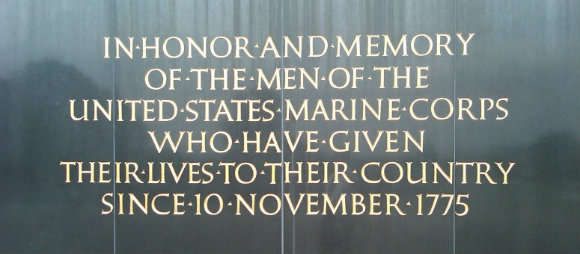 We are a group of men and who at some point decided we to put our lives on the line to help others who needed us. There is plenty of evidence to support this view. Turn on the news and you are likely to see the Marines in the middle of someone else’s trouble. Whether it be through humanitarian efforts or digging trenches and fighting persecuting forces around the globe. We truly are the world’s 911 force.
We are a group of men and who at some point decided we to put our lives on the line to help others who needed us. There is plenty of evidence to support this view. Turn on the news and you are likely to see the Marines in the middle of someone else’s trouble. Whether it be through humanitarian efforts or digging trenches and fighting persecuting forces around the globe. We truly are the world’s 911 force.
There is a side of our servicemen and -women we do not hear about too often, if at all. For most of these young men and women the battle that started in a foreign land does not end there. It follows them home and erodes away at their everyday lives. It consumes the people they used to be and leaves an empty shell void of hope. 22 of these heroes commit suicide each day. That sounds like a number that is hard to believe, but I can assure you it is real and well may be underestimated. These men and women, who so selflessly toed the line to help others, now need our help to gain the that they deserve — healthy, prosperous lives supported by those who love them and care enough to help them with the aftermath of their service
In the middle of this silent battle there are some who have stood up and taken the initiative to fight. These are men and women who have experienced the trauma and anguish that so many have fallen to over the years. Their mission is stated clearly: “We take pride in supporting veterans and ensuring their success in life.” They do this through many ways, including matching veterans up with mentors, providing professional counseling, and educating the public on this epidemic. As strong as these men are, they need our help. This is not a battle that they can win on their own.
For their years of service, Marines live a fast-paced and active lifestyle. Coming out of that lifestyle can prove to be a tough transition both mentally and physically. As facility owners, we can help. We have the means to provide a serviceman or woman an environment they have grown accustomed to and provide an outlet for some of the anxiety that comes with the transition to civilian life. This sounds like a simple solution, and it is in reality, but the impact it can have on a veterans life is big.
On October 26th, SFG Level II Paul Lyngso brought some of his students from Burr Ridge Kettlebell Club to Rebell Strength and Conditioning to engage in a small battle on behalf of our nation’s warriors. We, along with hundreds of facilities nationwide, and even some overseas, participated in The Raider Project Challenge. We put ourselves through a grueling one hour workout to raise funds. It was a huge success with thousands participating, but the fight is not over.
Lifting twice your bodyweight off the floor is strong. Reaching your hand out and lifting someone else’s bodyweight off the floor is stronger regardless of how much they weigh. We can make an impact. There are many ways we can get involved with this effort. If you know someone who has served, reach out to them. Let them know you are there if they need help. Let them know you are there for them just as they were there for all of us.
The Raider Project is just getting started with their mission and while it has been a strong start, it is a long road that they will be traveling. They need our help! Click here to make a monetary donation to The Raider Project.
I would like to thank my friend and much younger Marine brother, Matt Patruno, for helping me get this together. A combat Marine, Matt has opened my eyes to so many ways we can help our nation’s heroes. I am grateful for that. And, as he has done at so many points of my career, Dan John helped me get the many thoughts I had on this together. Thanks for being a mentor who leaves nothing to be desired.
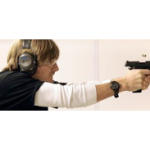
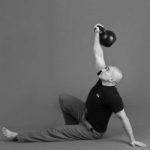
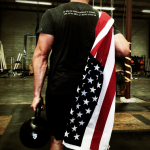
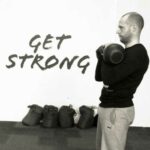




I ran across the article and thought it was great. Great to see a Marine talking about “The Life” and applying the benefits for all. Additionally, Thanks for speaking up about our Vets….
Semper Fidelis,
Mike Taylor, Col USMC, 1986-Present
Semper Fi Mike,
Your Article was Outstanding and as done an Honor to our fallen brothers.
Semper Fi,
Peter Dain,USMC,1965-1969
Greensoup:
If the military persons are tought to be a major audience for Strongfirst, then you are right: I shall stay away
from it. Have a nice day.
Interesting insight Mike. Thanks for sharing.
Miroslav Cak:
If you think this is propaganda you may wish to stay away from the rest of Strongfirst since its chairman and many of this site’s writers have training programs that can and are being applied to military service, some SPECIFICALLY for the military. They also express respect for the military, particularly the servicemen and women of nations the Strongfirst instructors serve, as these are a major audience for Strongfirst. If that is a problem for you now, it will continue to be a problem here.
Miller531:
It was not one-sided. He clearly discussed things the USMC could do to improve its training methods. “Quiet professionalism” is something that occurs during military service, not in the attempt to discuss training or in support of projects of interest to Strongfirst readers. Per my comment to Miroslav, this site has a strong military readership and it would be ridiculous for any company to ignore the needs of a major audience.
Mike:
Thank you for your previous and ongoing service!
I think this blatantly onesided glorification is far from “quiet professionalism”…
What has American propaganda to do with strength training?
Very well written article. With all the work Pavel has done with the armed forces, it amazes me that they haven’t embraced more basic, simple physical training protocols. What would the average Marine today perform like if he or she were only “fed a strict diet” of Kettlebell Swings and Snatches, Barbell Deadlifts, and weighted Chin-ups?
Thank you for your service.